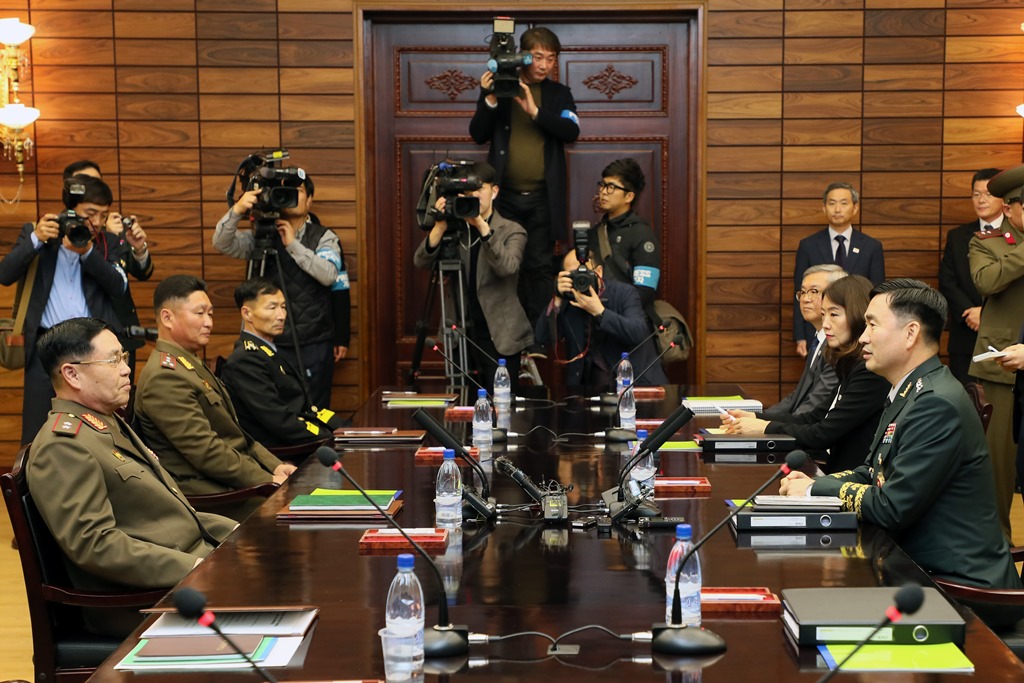Kim Jong-un’s visit to China

What were the circumstances of the visit?
The visit occurred before the meeting of the leaders of both Koreas, scheduled for April, the result of inter-Korean dialogue initiated this year, and a meeting between Kim and U.S. President Donald Trump, scheduled for May. Kim’s visit to China took place despite a deterioration in relations between the two countries over the past few years, mainly because of the North’s missile and nuclear tests, growing Chinese economic pressure on it, and Kim’s ostentatious avoidance of talks with the Chinese authorities. The North Korean leader’s visit, though, was similar to one made by his father and predecessor, Kim Jong-il, in May 2000, also his first foreign visit to China one month before the first inter-Korean summit.
What happened during the visit?
Although the visit was unofficial, the Chinese authorities made an extraordinary effort to highlight its importance, emphasised by the participation of the top leadership of both North Korea and China. The emphasis on both sides of the “traditional friendship” was to show the durability of their ties and will to improve bilateral relations after the tensions in recent years. Much space was devoted particularly to the need to strengthen communication at the highest level. The parties also reiterated their position on denuclearisation. Xi confirmed China’s commitment to a nuclear-free Korean Peninsula. Kim expressed his readiness to denuclearise on the condition that South Korea and the U.S. take “appropriate actions,” without specifying them.
What does China want?
With the resumption of the inter-Korean dialogue and the North’s pending talks with the U.S., China did not want to be diplomatically marginalised. China confirmed its ability to influence the North Korean regime by organising the meeting. The need to normalise regular contact between the authorities of both countries, emphasised by Xi, reflected China’s dissatisfaction with the policy directions of the North. Kim’s invitation to Beijing may be the beginning of greater Chinese involvement in multilateral attempts to solve problems related to the peninsula. Immediately after the visit, Yang Jiechi, a member of the Chinese Communist Party’s Political Bureau, a former state councillor and foreign minister, travelled to Seoul, South Korea. In addition, Xi purportedly proposed to Trump the establishment of four-party talks (China, the U.S., and both Koreas) to ensure lasting security on the peninsula.
What does North Korea want?
Kim Jong-un’s diplomatic debut was the culmination on the international stage of his consolidation of power. The visit to China was also meant to validate the North Korean diplomatic activity that started in January this year. Kim went to China to strengthen his negotiating position and increase the scope of the North’s diplomatic manoeuvring ahead of the meetings with the presidents of South Korea and the U.S. The North Korean leader has shown that, contrary to declarations from the U.S. administration, he is not diplomatically isolated. That, in turn, highlighted the deficiencies in the China-U.S. cooperation. Because China is considered a country primarily responsible for the implementation of sanctions on North Korea, Kim’s attempt to improve relations with China could also be aimed at easing Chinese economic pressure.
What impact might this visit have on the inter-Korean dialogue and the US-North Korea talks?
China supports the inter-Korean dialogue and will strive for more influence on the course of the talks. This may force the South Korean authorities to cooperate more closely with China and in effect undermine the South’s position as the initiator of diplomatic activities on the peninsula. On the one hand, by inviting Kim China has shown the U.S. that in a period of bilateral tensions (such as the current trade disputes), it is ready to act independently in regard to North Korea, without prior consultation with the Trump administration, or even against its will. On the other hand, Kim’s stance on denuclearisation calls into question the possibility of the U.S. diplomatic strategy aimed at pushing through the declared goal of a complete, verifiable, and irreversible dismantlement of the North’s nuclear programme.




